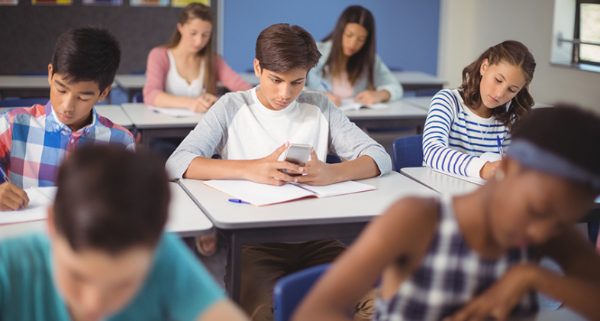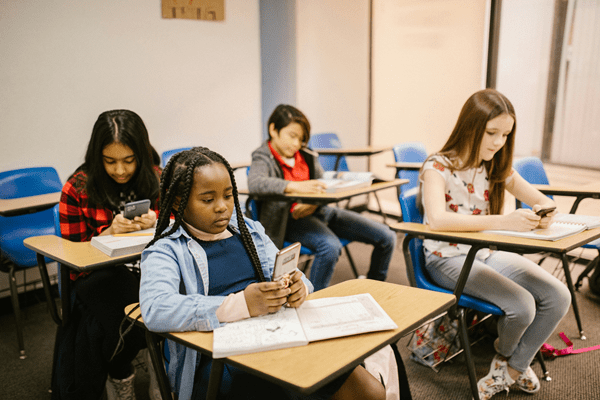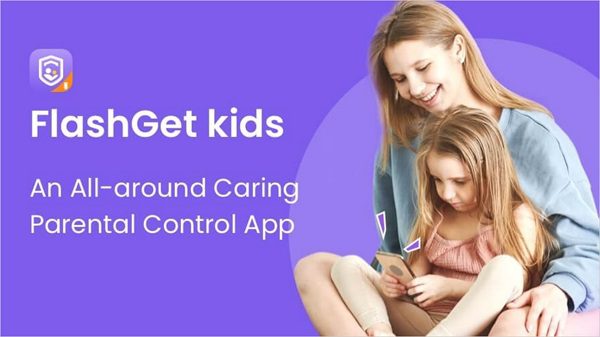Should students be allowed to take phones to school? This controversial issue has generated heated debates between educators, parents, and students. The critics allege that they are the cause of distraction and cyberbullying, while the supporters claim they are useful for learning and communication. This article will address in depth the different s that affect whether or not students should have phones in school by evaluating the benefits versus the risks.
At what age should a kid get a phone?
There is no unified definition of the minimum age at which a child should have a phone, as different factors are taken into consideration. However, many experts suggest that the minimum age be 12-14 years old. This is also the time when kids develop self-control and take on more responsibility.
Nevertheless, some parents choose to give simple cell phones to their kids for safety and communication purposes. What matters in the end is each child’s discernment, personal values, and capability to set limitations and stay vigilant.
Ensure your kids are safe, one-click connection, and better safeguarding with FlashGet Kids.
Should students have phones in school? Not just about age!



Whether cell phones should be allowed for students in school or not is a complex issue. It’s not just merely calculating how old a child is.
Though age matters to some extent, other aspects are also equally important. Read on to know what educators, parents as well as students should take into consideration.
Maturity level
Even at a young age, some kids have already shown the potential to follow rules, control their impulses, and use technology responsibly. On the other hand, older students may have problems with self-control and may not follow rules regarding the right phone use.
Carefully considering their prior track record in handling valuables, managing screen times, and understanding the importance of their digital footprint is essential.
Safety concerns
To most families, offering their child a mobile phone means assurance of keeping communications in case unexpected situations or emergencies.
Nevertheless, such an advantage should be well measured against the dangers posed by reckless use of the internet and social media.
Social awareness
Social awareness and emotional intelligence are also important factors that determine a student’s readiness for a smartphone.
Kids who do not understand the complexities of digital communication may be overwhelmed when dealing with texting and social media interactions.
Health behavior
We can not overlook the potential impact on a student’s health and well-being. Research shows that too much screen time may cause health problems, like insufficient sleep, low physical activity, and even mental health disorders.
Most students are already struggling to regulate their technology use. It may be even more difficult to maintain a balance if they always spend times on their phones.
Why cell phones should be used in school? (Pros)
Bear in mind that it may be beneficial when students responsibly use phones in an educational context. Here are some key advantages:
1. Emergency communication
The biggest reason for allowing students to use phones in school is that ensures kids communicate in time during emergencies.
In an age where speedy reaction holds the difference between safety and harm, these devices offer a direct pathway to immediate contact with school authorities, parents, or emergency services.
This enhances school safety overall and also rest families assured knowing that their child’s general wellbeing is being watched over and taken care of right away.
2. Enhanced learning opportunities
Smartphones provide a massive variety of educational resources and interactive learning functions. Thanks to the proliferation of educational apps, students can now engage with their subject matter immersively and dynamically.
When it comes to incorporating various learning styles and encouraging active involvement, these resources can complement standard classroom education.
3. Parental connectivity
Smartphones also work well in maintaining a stronger bond between parents and their kids throughout the school day.
It addresses practical issues like managing schedules and unexpected events, but it also fosters a sense of security and involvement in children’s education.
Parents can get updates about school activities and contact directly with their children, which will help them work jointly toward their kids’ academic sphere.
4. Organizational tools
Smartphones are not to be underestimated when it comes to their organizational skills.
Many apps and online resources are designed to assist students in improving their ability to manage time, take notes, and organize their tasks.
Such informed resources would serve as a springboard for students to develop habits. These guarantee academic excellence and adequately prepare them for future career challenges.
5. Accessibility for diverse learners
It’s also critical to recognize that inclusivity is another key aspect of smartphones in education.
Students with disabilities can get great assistance with these devices. They can enjoy features such as speech-to-text and accessibility settings that create a favorable learning environment.
6. Collaborative learning
Smartphones as educational tools will foster collaborative learning among students where they can share resources and participate in virtual discussions.
This not only builds teamwork and communication skills but also prepares students for the collaborative environments that characterize modern workplaces.
7. Up-to-date information
With the availability of the internet, students can keep themselves abreast with current affairs and access information, further encouraging curiosity and critical thinking.
Why are phones banned in some schools? (Cons)
Even though smartphones may be valuable educational tools, numerous schools still choose to ban outright cell phones on campuses.
The rationale behind this choice is a sensible one. It is evident that the use of phones in educational settings poses tremendous hurdles and can potentially be unsafe.



1. Potential for distraction
Distraction is one of the main reasons why some classrooms ban phones. Students can be so attached to their smartphones and are constantly distracted by notifications, social media updates, and games.
This is not only a hindrance to the student’s ability to grasp and retain the concepts but also creates a disturbance for the whole class.
Without realizing it, the phone presence could already be a distraction source. Whenever students check their messages, their focus and engagement could be compromised.
2. Cheating in exams
Another legitimate worry is the possibility of cheating during tests or assignments as well.
The internet has a wide range of information that students may access and use to facilitate academic dishonesty.
Not only does this undercut the value of the educational process, but it also raises moral doubt about the level playing field and fair assessment.
3. Privacy concerns
Another vital concern related to the use of phones in schools is privacy. There are cameras everywhere and people can easily share content online, which can create situations whereby students’ privacy rights are invaded.
From unauthorized recording of classes or personal interactions to posting of one’s images or videos without the consent of the individual, there are lots of privacy violation possibilities.
This can lead to an atmosphere of mistrust and uncertainty, eventually destroying the learning experience.
4. Cyberbullying and misuse
Social networks and instant messaging platforms are often used as a tools for harassing, intimidating, and spreading inappropriate or harmful content.
This not only puts the emotional health of students at risk but can also aggravate more detrimental forms of bullying and, in some cases, even lead to criminal charges.
Schools have a duty to create a safe and nurturing environment, and the presence of phones complicates efforts to address and prevent such behavior.
5. Addictive nature
The hooking effect of smartphones, as well as their role in mental health, cannot be left entirely out of consideration.
Too much screen time results in the development of a variety of problems, for example, poor sleep habits and mental health problems, such as anxiety and depression.
By prohibiting mobile phones, teachers seek to develop a more stable equilibrium and secure their pupils from any adverse repercussions.
How FlashGet Kids helps ensure your kids’ safety in school?



The prime duty of the parents, above all, is to safeguard the safety of our children, especially in school. That’s where the FlashGet Kids enters, providing a wide variety of solutions that would help parents watch closely, even when they are away from their child silently.
FlashGet Kids is a very powerful parental control app that gives plenty of opportunities to parents to stay in touch with their children throughout the school day. Here is how the app can be beneficial to you as a parent:
Location tracking: You can track your kids’ real-time location with the FlashGet Kids application. With this, you can know whether they have arrived at school safely and whether they are following their usual route home.
Safe zones: You can create “safe zones” using this app within the school vicinity and call it out. Therefore, you may be notified if your student wanders away from the confined area, which may mean he or she skipped school to go somewhere else during class hours.
Emergency alerts: Unexpected situations might even need your instant intervention. The FlashGet Kids app allows you to set up SOS alerts so that you’ll receive an alert when your child presses a pre-defined button in the app. This allows you to respond to the situation quickly.
Conclusion
The question of whether students should bring phones to school premises does not mean the answer should be ‘yes’ or ‘no’.
This equilibrium where the educational potential is recognized with every negative manifestation of distraction, misuse, and mental health issues is of utmost importance.
Prudent actions, the application of control apps such as FlashGet Kids, and communication among educators, guardians, and learners, therefore, should be given top priority.
In the end, the circumstance must be controlled by the learner all the same. Because impacting factors of this situation should include creating a safe, friendly, and supporting environment in the classroom.
FAQs
Can I monitor my child’s phone without them knowing?
Indeed, quite a few apps use stealth mode to view your kid’s phone activities, for example, who they call, who they talk to, where they are located, and what they do online.
Can I monitor my child’s Android from my iPhone?
Yes. The fact that most parental control solutions are cross-platform compatible means that you would be able to monitor your child’s Android device from your iPhone or the other way round.
What are the most important features of a parental control app?
The primary functions are precisely location tracking, content filtering, app blocking, screen time restraint for calls, messages, and web browsing.

